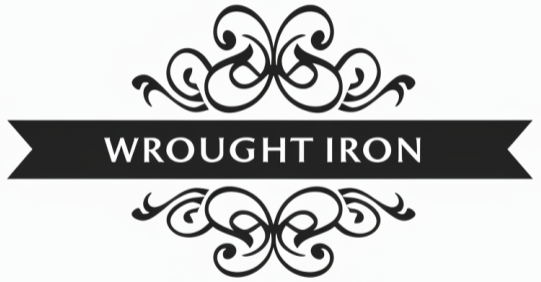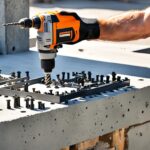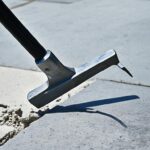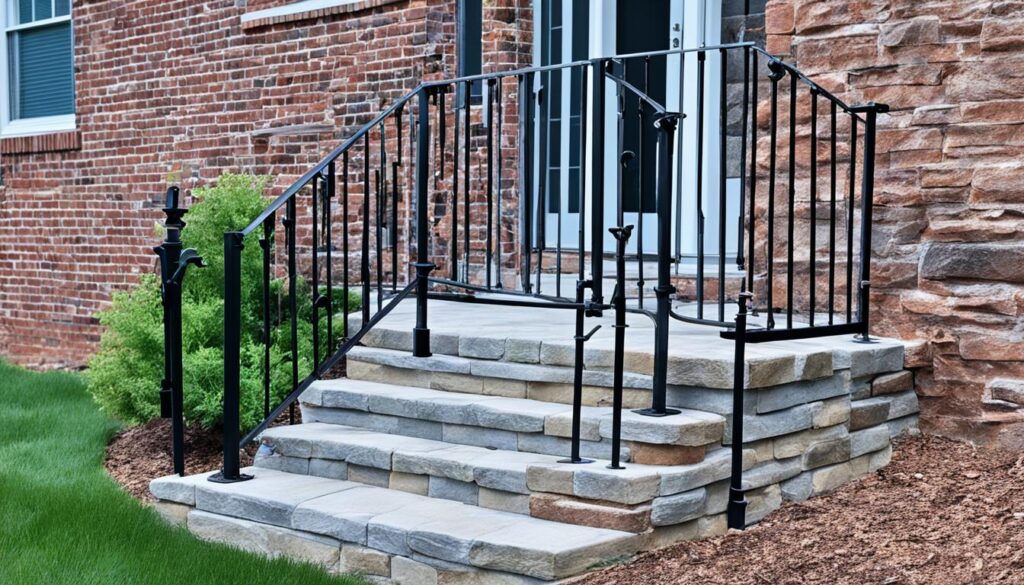
Imagine enjoying a warm summer evening on your porch, with a new wrought iron railing you installed. It’s more than just metal; it’s a sign of elegance and safety. It fits perfectly with your brick house. The process of installing wrought iron railing in brick is rewarding, especially when you see the final result.
Working with brick can be tricky because it might crack or crumble if not handled right. You need precision and the right methods. Make sure each drill hole is measured well and every anchor is secure. This way, your dream of beautiful outdoor railings comes true.
Key Takeaways
- The chosen railing kit is often a 2.5-inch aluminum, white powder-coated set for durability and aesthetic appeal1.
- Separate posts with base covers and a post cap are essential for installation, ensuring robust support1.
- Accurate measurements and proper tools, such as a hammer drill and concrete/brick anchors, are crucial for successful installation2.
- DIY installation emphasizes the importance of safety precautions, like wearing safety goggles during cutting1.
- Epoxy and other anchoring materials must be correctly applied to avoid damage to the brick and ensure long-term stability3.
- Properly installed wrought iron railings can greatly enhance the appearance and value of your home1.
Understanding the Challenges of Brick Railing Installation
When tackling brick railing installation, you might face issues like brick cracking or blowouts when drilling. It’s key to know the brick type you’re dealing with. Different bricks react differently to drilling. Experts suggest using tools from brands like Hilti North America and CS Unitec, as they’re made for masonry4. To avoid damage, keep at least a 3-inch gap from the brick edge when drilling holes4.
Choosing the right anchoring cements, like Por-Rok and Rockite, is crucial for securing railings4. Also, how you do it matters a lot. Experts say to mound grout around posts to keep water away and prevent damage4. Following these steps helps avoid water damage and keeps your railing strong for a long time.
“Using top-quality materials and the right tools can significantly improve the outcome of your brick railing installation,” emphasizes a member of NOMMA, the National Ornamental and Miscellaneous Metal Association4.
Working with suppliers like Julius Blum, Wagner Companies, and King Architectural Metals ensures reliability and durability4. Groups like NOMMA and the American Fence Association (AFA) offer guidance on techniques and products for top-notch railings4.
Dealing with different projects brings unique challenges. For example, 1 in 13 projects involved curved rails, making things more complex5. In Brick, NJ, a staircase got modern, sleek railings with black metal balusters, showing what’s possible with the right approach5.
Installation costs vary based on custom designs and material choices. Knowing these factors helps in planning and doing a successful brick railing installation project. Avoiding damage depends on your prep, knowledge, and following professional advice and guidelines.
Tools and Materials Needed for Wrought Iron Railing Installation in Brick
Installing a wrought iron railing in brick needs specific tools and materials for a strong and safe setup. Below are the key tools and materials you’ll need for a DIY project.
Essential Tools
Getting the right tools is key for the job. A hammer drill is vital for drilling into the brick. You also need a masonry bit that fits your drill for brick. Compressed air helps clean out brick dust from the holes.
You’ll also need a reciprocating saw for cutting old material, a pop rivet gun, and a wet/dry vacuum for cleaning. A caulk gun and small bottle brush come in handy during the installation67.
Materials to Secure the Railing
Choosing the right materials is as important as the tools. For securing the railing, use surface mount posts made of strong materials like aluminum posts or powder-coated steel posts. Epoxy helps bond the brick and components together securely. The handrail system should be able to hold at least 200 pounds of pull force7.
Make sure the anchor screws go at least 3 inches into the brick for stability. Using stud anchors and PC Products Concrete Epoxy with mixing nozzles will make the installation last longer7.
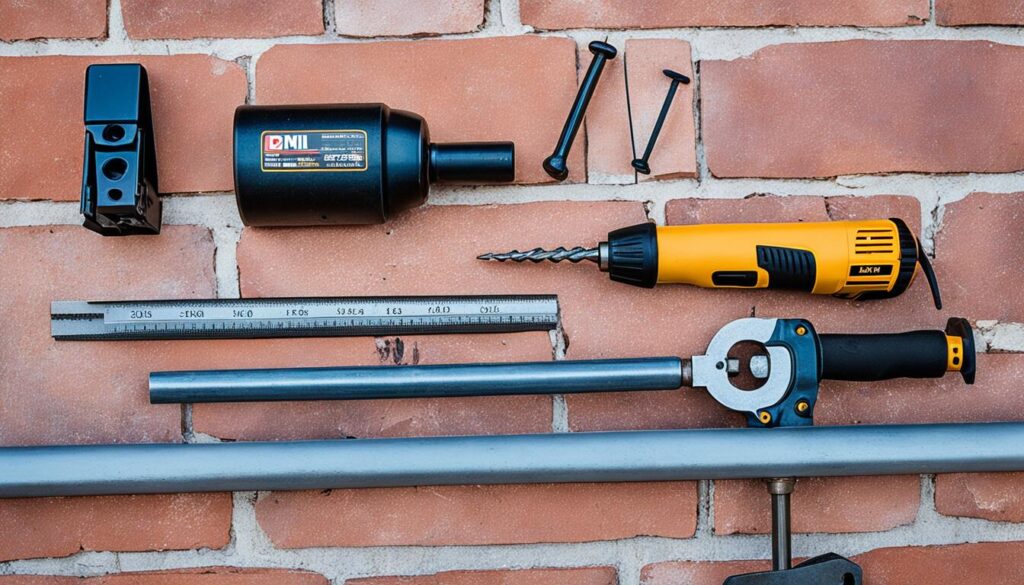
For top-notch results, think about using products from trusted brands like Fortress® building products. These tools and materials will help you install your wrought iron railing in brick smoothly and securely.
How to Install Wrought Iron Railing in Brick
When putting up porch or stair railings in brick, making sure the posts are aligned right is key. First, check that your posts are at least 42 inches tall for safety and to follow the law89. It’s also vital to measure the steps carefully to get the handrail installed at the right angle9. For a strong railing, drill into bricks at least 3 inches deep and skip the mortar, as bricks are stronger8.
Use a hammer drill for better and quicker drilling into bricks8. Surface mount posts are better for brick because most bricks are 4 inches deep8. After drilling, fill any cracks with epoxy for extra stability8.
Make sure there’s at least 1.5 inches of space from the wall for the handrail10. Don’t let wall projections be over 4.5 inches10. Railings should stretch 12 inches past the top post and one step down from the bottom riser for safety10. Also, keep railings at least 30 inches apart for easy use10.
Aluminum or powder-coated steel posts are good choices because they last long and need little upkeep8. It’s also key to use railing systems that match the posts for a smooth installation8. Well-put-together railings make your property look better and keep it safe.
Finally, follow the maker’s instructions carefully to secure your railing9. This careful planning and securing ensures your railing is strong, looks good, and meets safety standards. It gives you peace of mind and keeps your property safe.
Step-by-Step Guide to Drilling and Securing Railing in Brick
Installing wrought iron railing in brick requires careful planning for durability and safety. It’s important to use the right tools and materials for a successful installation. Here are the steps to follow for a professional finish.
Drilling the Holes
Start by marking where you’ll place the railing posts in the brick. Use a core drill with a diamond-tipped bit for precise holes and less damage. Keep the drill cool with water to avoid overheating the bits. Use a level to make sure your marks are straight before drilling.
For small holes, a hammer drill works best. For larger holes over ⅜-inch, a rotary hammer is better11. Always wear safety gear like eye protection, gloves, and an N95 respirator to protect yourself during drilling11.
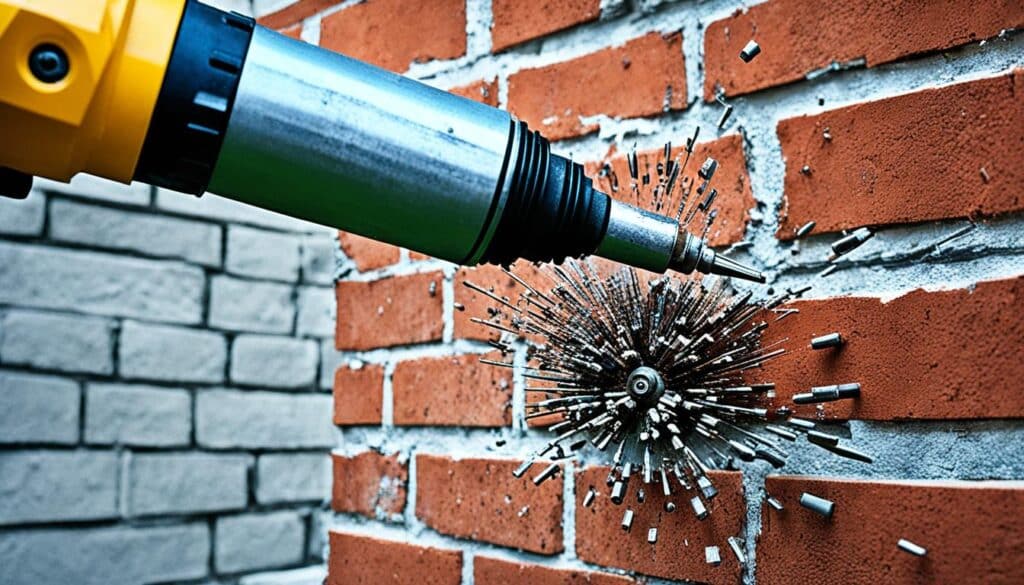
Inserting the Anchors
After drilling, put in the anchors. Expansion screws are great because they expand and grip the brick or concrete well11. Make sure each hole is drilled to the right depth. Use anchoring cement or nonshrink grout to secure the anchors firmly.
This method keeps the railing posts stable and secure. It helps prevent the installation from shifting or loosening over time.
Securing the Posts
Next, secure the railing posts. Fill the holes with anchoring cement after placing the expansion screws. Make sure the posts are straight and level. Check the position before the cement sets.
Once the posts are in the right spot, seal around them with caulking to keep out water. This ensures a secure and long-lasting installation. Following these steps will help you install wrought iron railing professionally, securing handrails and railings effectively.
Conclusion
Starting a DIY railing project needs careful planning and the right tools and materials. We’ve covered key steps from understanding brick installation challenges to picking strong outdoor railing materials like custom wrought iron12. Using the right alignment and drilling methods, along with proper anchors, makes your railing last longer13.
Wrought iron railings are a top pick for many homes because they look great and last long. They might cost more because they’re made by hand and can be customized. But, they add beauty and value to your home12. Keeping your brick in good shape and using strong anchors also helps your railing last longer13.
This guide has given you the tools and knowledge to do a great DIY railing job. You’ll get a strong outdoor railing that makes your home safer and look better. Paying attention to details and doing things right is key for a safe and good-looking result. Your wrought-iron handrail will show off your style and quality12.
FAQ
What challenges can I expect when installing a wrought iron railing in brick?
What tools are essential for installing wrought iron railing in brick?
What materials should I use to secure the railing?
How should I drill holes in brick for railing installation?
What is the proper procedure for inserting anchors in brick?
How do I secure the railing posts?
Why is it important to anchor only into the brick and not the mortar?
How can I avoid over-tightening screws when securing the railing?
What are the benefits of using powder-coated steel posts?
Source Links
- Installing New Hand Rails – Dosher Construction, Inc. – https://dosherconstruction.com/installing-new-hand-rails/
- How to Install a Stair Railing (Step-by-Step Instructions) – https://www.simplifiedbuilding.com/projects/how-to-install-a-stair-railing
- Attaching Handrail to Brick Walls – MMC Fencing & Railing – https://mmcfencingandrailing.com/attaching-handrail-to-brick-walls/
- Architectural Metal Essentials: Correct Installation Methods for Decorative Metal Railings – https://www.linkedin.com/pulse/how-avoid-most-common-problems-anchoring-metal-railings-bracken
- Railing Project Case Studies – Up Stairs Rails | NJ Showcase – https://www.upstairsrails.com/case-studies
- How to replace an outside iron railing set in cement – https://www.naturalhandyman.com/iip/infrailing/infreplacemetalrailings.html
- Install Handrail Into Brick – Ask the Builder – https://www.askthebuilder.com/install-handrail-into-brick/
- Tips on Installing Handrails on Brick Steps | Fortress – https://fortressbp.com/blog/163/tips-on-installing-handrails-on-brick-steps-with-minimal-hassle
- How to Install Hand Rail on Brick Steps | ehow.com – https://www.ehow.com/how_7345329_install-hand-rail-brick-steps.html
- How to Install Iron Railings on Brick or Concrete Steps – Renee Renovates – https://reneerenovates.com/how-to-install-iron-railings-on-brick-or-concrete-steps/
- How to Drill Into Brick – https://www.bobvila.com/articles/how-to-drill-into-brick/
- Timeless Elegance: The Beauty of Wrought Iron Handrails – https://www.alpine-contracting.com/remodels/206-timeless-elegance-the-beauty-of-wrought-iron-handrails
- To core or not to core, that is the question – https://app.aws.org/forum/topic_show.pl?tid=30701
